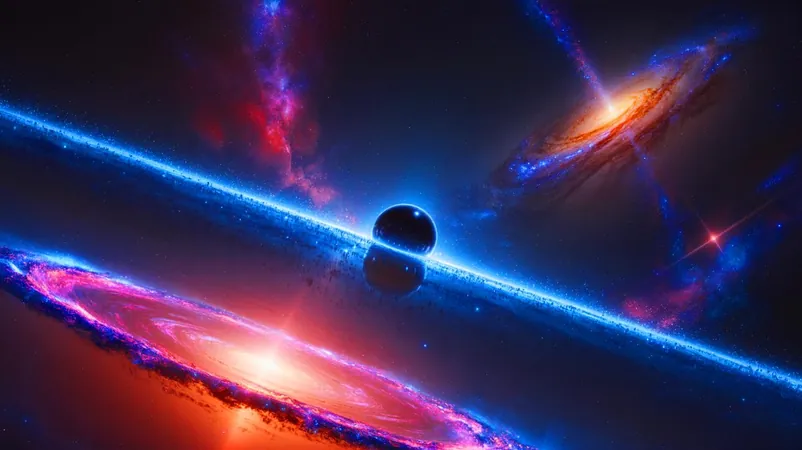
"The Mirror Universe: Is Dark Matter Hiding in a Hidden Twin World?"
2025-08-09
Author: Sarah
Unlocking the Secrets of Dark Matter
For years, scientists have been captivated by the enigma of dark matter, a mysterious substance that comprises an astonishing 85% of the universe’s mass. New bold theories are shaking the foundations of our understanding, suggesting the existence of a "mirror world" with twin particles and an intriguing particle factory at the cosmos's expanding edge. These ideas not only challenge traditional models but also offer exciting new predictions to test.
The Dark Matter Dilemma
Galaxies spin at speeds that defy logic, and clusters of galaxies bend light more than expected. This begs the question: where is all the mass? While dark matter remains invisible, it is inferred from gravitational effects, leading scientists on a relentless quest for answers. Despite various experimental efforts, traditional dark matter candidates are elusive, compelling physicists like Stefano Profumo to explore innovative theories that step away from standard models in light of consistent null results.
Two Groundbreaking Theories Unveiled
Two revolutionary concepts have emerged, each presenting a unique perspective on dark matter's origins. The first, documented in arXiv, proposes a "mirror sector"—an alternate reality with familiar particles interacting weakly with our universe. In this realm, theorized dark quarks could bind into heavy baryons that might be undetectable remnants of the early universe, potentially accounting for the elusive missing mass.
The second theory, published in Physical Review D, explores how the universe's expanding edge might have functioned as a cosmic particle factory during early inflation. In this brief, intense phase, particles akin to those produced near black holes could have arisen, forming dark matter over various mass ranges. If true, this would mean dark matter is not just a byproduct but a fundamental aspect of cosmic evolution.
Experimental Pathways Ahead
The mirror world theory has generated renewed interest, suggesting that either mirror electrons or baryons could serve as dark matter candidates. Excitingly, both scenarios predict the existence of a mirror photon, potentially detectable through cosmic background surveys or stellar mapping efforts. A new era of astronomy may lie ahead, where observing small deviations in galaxy structure could validate or refute this groundbreaking hypothesis.
The Horizon of Creation: A Simpler Explanation?
Profumo’s second hypothesis presents a more intuitive equation. Imagining the post-inflation universe as a steady expansion phase, the cosmic horizon may function like a hot surface producing particles through quantum phenomena. If these particles interact solely via gravity, they could persist as dark matter we see today. Observations of gravitational waves or anomalies in early expansion could reveal critical insights into the mass range of such dark matter.
A Shift in the Search for Dark Matter
As physicists explore these daring new theories, the scientific community begins to pivot—from detecting specific particles in lab settings to examining broader cosmic phenomena. Insights from galaxy surveys, cosmic background radiation mapping, and gravitational wave studies reflect this shift. The question now looms: will these innovative approaches unlock the secrets of the universe’s hidden mass? The race is on to reveal what lies beneath the surface of our cosmic reality!




 Brasil (PT)
Brasil (PT)
 Canada (EN)
Canada (EN)
 Chile (ES)
Chile (ES)
 Česko (CS)
Česko (CS)
 대한민국 (KO)
대한민국 (KO)
 España (ES)
España (ES)
 France (FR)
France (FR)
 Hong Kong (EN)
Hong Kong (EN)
 Italia (IT)
Italia (IT)
 日本 (JA)
日本 (JA)
 Magyarország (HU)
Magyarország (HU)
 Norge (NO)
Norge (NO)
 Polska (PL)
Polska (PL)
 Schweiz (DE)
Schweiz (DE)
 Singapore (EN)
Singapore (EN)
 Sverige (SV)
Sverige (SV)
 Suomi (FI)
Suomi (FI)
 Türkiye (TR)
Türkiye (TR)
 الإمارات العربية المتحدة (AR)
الإمارات العربية المتحدة (AR)